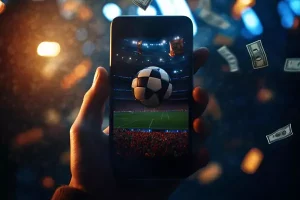connect with people
- تاریخ 08/13/2025

فهرست مطالب
5 ways to connect with people
Exploring how to use your voice and body on stage will help you tackle the most important piece of giving a powerful talk: connecting with your audience.
People aren’t computers. They’re social creatures with all kinds of unique traits. Your first job as a speaker is to build a trusting human bond with your audience. There are many ways to do that.
Here are five suggestions:
Make eye contact with members of your audience right from the start of your talk and continue making eye contact throughout.
Humans learn a lot about one another through eye contact. Our brains can detect the tiniest muscle movements in someone else’s eyes. We use that information to figure out all sorts of things—like how that person is feeling and whether or not we can trust them.
And while we’re doing that, they’re figuring out the same things about us. Scientists have even shown that when two people stare at one another, their brains start to adopt the same emotional state. So, when we make eye contact, our minds link up.
One of the best ways to put an audience at ease is to reveal your own vulnerability. It’s like a tough cowboy walking into a saloon and opening his coat to show he’s not carrying any weapons. Everyone relaxes.
Take this example from Ethan Lisi, who spoke at a TED-Ed Student Talks event in 2020:
“Another common stereotype that is often associated with autism is that autistic people lack empathy. And again, this is not true. I actually have lots of empathy. I’m just not really good at showing it. Whenever a friend is trying to tell me some of the struggles that they’re going through, I often don’t know how to express my reply.
And that is why I don’t show as much empathy as my non-autistic friends do. Emotional expression, however much or however little, is difficult for me. And that is because I am bursting inside with every single emotion one feels at all times.
Though, of course, I cannot express it that way. Otherwise, let’s say happiness, for example, would come out as a huge burst of gleeful wheezing, hand flapping, and loud vocal ‘woohoo!’ Whereas you may just smile.”
Ethan’s willingness to open up about something vulnerable helps the audience open up as well; allowing them to see him, and perhaps the world, from a new perspective. We feel connected. We’re ready and eager to learn more.
Sharing something vulnerable is a powerful tool a speaker can use to connect to an audience. But, as with anything powerful, it should be handled with care.
It is possible to share too much personal information in a talk, in a way that makes the audience feel uncomfortable. Make sure any vulnerable moments you include are there to help support the message you are trying to deliver. If they aren’t doing that, it’s probably best to leave them out.
Vulnerability related to your message is powerful. Sharing something personal just for the sake of it is not. If you’re not sure whether or not a vulnerable moment is appropriate, try your talk out on an honest friend.Concentrating on a talk can be hard work for an audience. Humor is a wonderful way to keep everyone with you.
Remember Sophie Scott’s talk from Lesson One? If Sophie is right, part of the reason laughter exists is that it helps humans form bonds. When you laugh with someone, you both feel you’re on the same side. It’s a fantastic tool for building a connection.
Some of the very best speakers in the world spend a lot of time building this connection in their talks. However, take caution. Spending a lot of time on funny stories, while still delivering a meaningful message, is difficult. It’s not recommended for most talks.
But, if you can find just one short story that makes people smile, it may unlock the rest of what you have to say.Would you want to listen to someone who seems completely full of themselves?
Nothing hurts a talk more than the sense that the speaker is showing off. If an audience gets that impression early on in a talk, look out—they will likely stop listening.
TED Speaker Salman Khan put it beautifully:
“Be yourself. The worst talks are the ones where someone is trying to be someone they aren’t. If you are generally goofy, then be goofy. If you are emotional, then be emotional. The one exception to that is if you are arrogant and self-centered, then you should definitely pretend to be someone else.”
Ego can show up in a lot of ways the speaker may not even be aware of, such as: name dropping, telling stories just to show off, boasting about your achievements, or making the talk all about you.
Remember that the purpose of your talk is to gift an idea, not tell everyone how great you are. Still, these things can be hard to catch yourself on. Every leader needs someone she can count on for honest feedback—someone who’s not afraid to tell her the truth about how she’s coming across, even if that’s difficult to hear.
A good way to know whether or not your talk seems boastful is to read it for that trusted person. Give them the chance to say, “That was great in parts, but honestly, you came across a little full of yourself.”
We’re born to love stories. They create interest, empathy, emotion, and a sense of mystery. They can help an audience understand why a topic matters to you, and encourage them to care about that topic, too.
Powerful stories can be great at any stage of a talk: a great way to open, a great way to make your point in the middle, and sometimes (though less often) a great way to end.
The stories that work best to connect with the audience are the stories about you personally, or about the people close to you. Tales of failure, awkwardness, bad luck, danger or disaster, when told honestly, can really hook an audience. They start really listening. They start to share some of your emotions. They start to care about you. They start to like you.
But be careful. The stories you tell must be authentic to you. Again, stories that seem boastful will push an audience away. Ask yourself:
is it the real me telling this story? A good test is to imagine whether or not you would tell the story to a group of friends. If so, how would you tell it? Friends are good at knowing when you’re trying to be someone other than you. And so are audiences.Be yourself and you won’t go wrong.
The suggestions and tools in this lesson should all be used as part of a real desire to connect to your audience. It’s that connection that’s important. You’re a human, and your listeners are humans. Think of them as friends and reach out with your gift.
۵ روش برای ارتباط گرفتن با مردم
یاد گرفتن اینکه چطور از صدات و حرکات بدنت روی صحنه استفاده کنی، بهت کمک میکنه مهمترین قسمت یه سخنرانی قوی رو درست انجام بدی: یعنی اینکه با مخاطبات ارتباط برقرار کنی.
مردم مثل ربات نیستن؛ اونها موجودات اجتماعی هستن که هر کدوم ویژگیهای خاص خودشون رو دارن. اولین کاری که باید بکنی اینه که یه رابطهی انسانی و قابل اعتماد با مخاطبهات بسازی. راههای زیادی برای این کار وجود داره.
اینجا پنج تا پیشنهاد دارم برات:
از همون اول سخنرانی، با مخاطبهات تماس چشمی برقرار کن و تا آخر حرفهات این کار رو ادامه بده.
ما خیلی چیزا رو از نگاه هم میفهمیم. مغز ما حتی کوچکترین حرکت چشم دیگران رو حس میکنه و از این راه میفهمیم اونها چه حسی دارن و میتونیم بهشون اعتماد کنیم یا نه.
در حالی که ما داریم این کار رو میکنیم، اونها هم دارن همین کار رو با ما انجام میدن. دانشمندا نشون دادن وقتی دو نفر به هم زل میزنن، مغزهاشون همحالی میشن. پس وقتی تماس چشمی برقرار میکنیم، ذهنهامون بهم وصل میشه.
یکی از بهترین راهها برای اینکه مخاطب راحت باشه، اینه که خودت رو آسیبپذیر نشون بدی. مثل یه کابوی قوی که میاد تو یه بار و کتش رو باز میکنه که ثابت کنه اسلحه نداره. همه آروم میشن.
مثلاً ایتن لیسی تو سخنرانی TED-Ed سال ۲۰۲۰ گفت:
یه باور غلط دربارهی اوتیسم اینه که مردم فکر میکنن افراد اوتیسمی همدلی ندارن. اما من خیلی همدلی دارم، فقط بلد نیستم خوب نشونش بدم. وقتی دوستم درباره مشکلاتش حرف میزنه، معمولا نمیدونم چی جواب بدم. به خاطر همین همدلی من کمتر دیده میشه.
ابراز احساسات برای من سخته چون همیشه پر از احساسات مختلفم، ولی نمیتونم نشونش بدم. مثلاً وقتی خوشحالم، ممکنه به جای لبخند زدن، نفسنفس بزنم و دستهام رو تکون بدم و یه صدای بلند «ووهو!» بدم. شما فقط لبخند میزنید.
ایتن وقتی درباره این مسائل حرف میزنه، باعث میشه مخاطب هم احساس راحتی کنه و به حرفهاش بیشتر گوش بده. اینطوری یه ارتباط قوی شکل میگیره و مخاطب آمادهست بیشتر یاد بگیره.
اشتراک گذاشتن اینجور چیزهای آسیبپذیر، یه ابزار قدرتمنده که باید با دقت استفاده بشه.گاهی ممکنه اطلاعات شخصی زیادی بگی که باعث ناراحتی مخاطب بشه. پس مطمئن شو هر نکتهای که آسیبپذیریت رو نشون میده، به حرف اصلیات کمک میکنه. اگر کمک نمیکنه، بهتره حذفش کنی.
آسیبپذیری وقتی تاثیرگذاره که به پیامت ربط داشته باشه، نه اینکه فقط برای گفتنش باشه. اگر مطمئن نیستی، اول حرفهات رو به یه دوست صادق بگو و نظرش رو بپرس.سخت میشه مخاطب رو تمرکز داد، مخصوصا برای یه سخنرانی طولانی. طنز یه راه عالیه که همه رو با خودت همراه نگه داری.
یادت هست درس اول وقتی سوفی اسکات میگفت خنده باعث میشه ما با هم ارتباط برقرار کنیم؟ وقتی با کسی میخندی، هر دو احساس میکنید تو یه تیم هستید. این یه ابزار فوقالعاده برای وصل شدن به مخاطبه. خیلی از سخنرانهای خوب دنیا خیلی وقت میذارن که این ارتباط رو بسازن.
ولی مواظب باش، صرف وقت زیاد روی شوخی و داستان خندهدار و در عین حال دادن پیام مهم کار سختیه و برای همه سخنرانیها مناسب نیست.اما اگر تونستی فقط یه داستان کوتاه بگی که لبخند به لب مخاطب بیاره، خیلی به کارت میاد و بقیه حرفهات راحتتر قبول میشه.
دوست داری به کسی گوش بدی که فقط خودش رو بزرگ میکنه؟ هیچ چیز به اندازه این حس که سخنران داره خودش رو نشون میده به حرفش ضربه نمیزنه. اگر مخاطب از اول این حس رو بگیره، احتمالاً گوش دادن رو ول میکنه. سلمان خان، سخنران TED، گفته:
خودت باش. بدترین سخنرانیها اونهایی هستن که آدم سعی میکنه نقش یکی دیگه رو بازی کنه. اگه معمولاً شوخطبعی، پس شوخ باش. اگه احساسی، پس احساساتت رو نشون بده. فقط اگه مغرور و خودخواهی، بهتره نقش یه آدم دیگه رو بازی کنی.
غرور میتونه به شکلهای مختلف خودش رو نشون بده، حتی وقتی خودت هم متوجه نیستی؛ مثلاً اسم آدمای معروف رو زیاد آوردن، تعریف کردن داستان فقط برای خودنمایی، تعریف از دستاوردهای خودت یا اینکه حرفها رو فقط درباره خودت بزنی.
یادت باشه هدف از سخنرانی اینه که یه ایده به مخاطب بدی، نه اینکه همه رو تحت تاثیر قرار بدی. ولی این چیزها ممکنه سخت باشه که خودت متوجه بشی. هر رهبر یه نفر لازم داره که بتونه راست و صادقانه بهش بگه چطور دیده میشه، حتی اگه سخت باشه.
یه راه خوب برای فهمیدن اینکه حرفهات خودستایانه است یا نه، اینه که حرفهات رو به یه دوست مورد اعتماد نشون بدی و بپرسی: «نظر تو چیه؟» شاید بگه: بعضی جاها عالی بود، ولی راستش یه کم زیادی خودت بودی.
ما از بچگی عاشق داستان شنیدن هستیم. داستانها باعث میشن جذب بشیم، همدلی کنیم، احساس داشته باشیم و کنجکاو بشیم. داستانها کمک میکنن بفهمیم چرا یه موضوع برای ما مهمه و باعث میشن مخاطب هم بهش اهمیت بده. داستانهای قوی میتونن هر جا از سخنرانی باشن: اول، وسط که نکتهات رو برسونی و بعضی وقتها آخر.
بهترین داستانها اونهایی هستن که درباره خودت یا نزدیکانت باشه. داستانهای شکست، خجالت، بدشانسی یا خطر وقتی صادقانه گفته بشن خیلی خوب مخاطب رو جذب میکنن. مخاطب گوش میده، باهات احساس همدلی میکنه، بهت اهمیت میده و دوستت داره.
اما مواظب باش. داستانها باید واقعی باشن. داستانهایی که زیادی خودشیرین باشن، مخاطب رو فراری میدن. از خودت بپرس: «آیا واقعاً خودم دارم این داستان رو میگم؟» یه تست خوب اینه که فکر کنی آیا این داستان رو به جمع دوستهات میگی؟ اگه آره، چطوری تعریفش میکنی؟ دوستها خوب میفهمن وقتی داری نقش بازی میکنی و مخاطبها هم همینطور.
خودت باش، راه درست رو میری.تمام این پیشنهادها و ابزارها باید با هدف واقعیِ ارتباط گرفتن با مخاطب استفاده بشن. مهم اینه که ارتباط برقرار بشه. تو انسان هستی و مخاطبات هم انسانن. مثل دوستهات بهشون نگاه کن و هدیهات رو با دل و جون بهشون بده.
شما همچنین ممکن است دوست داشته باشید

? What is bipolar disorder

The clever trick used by sports betting apps






